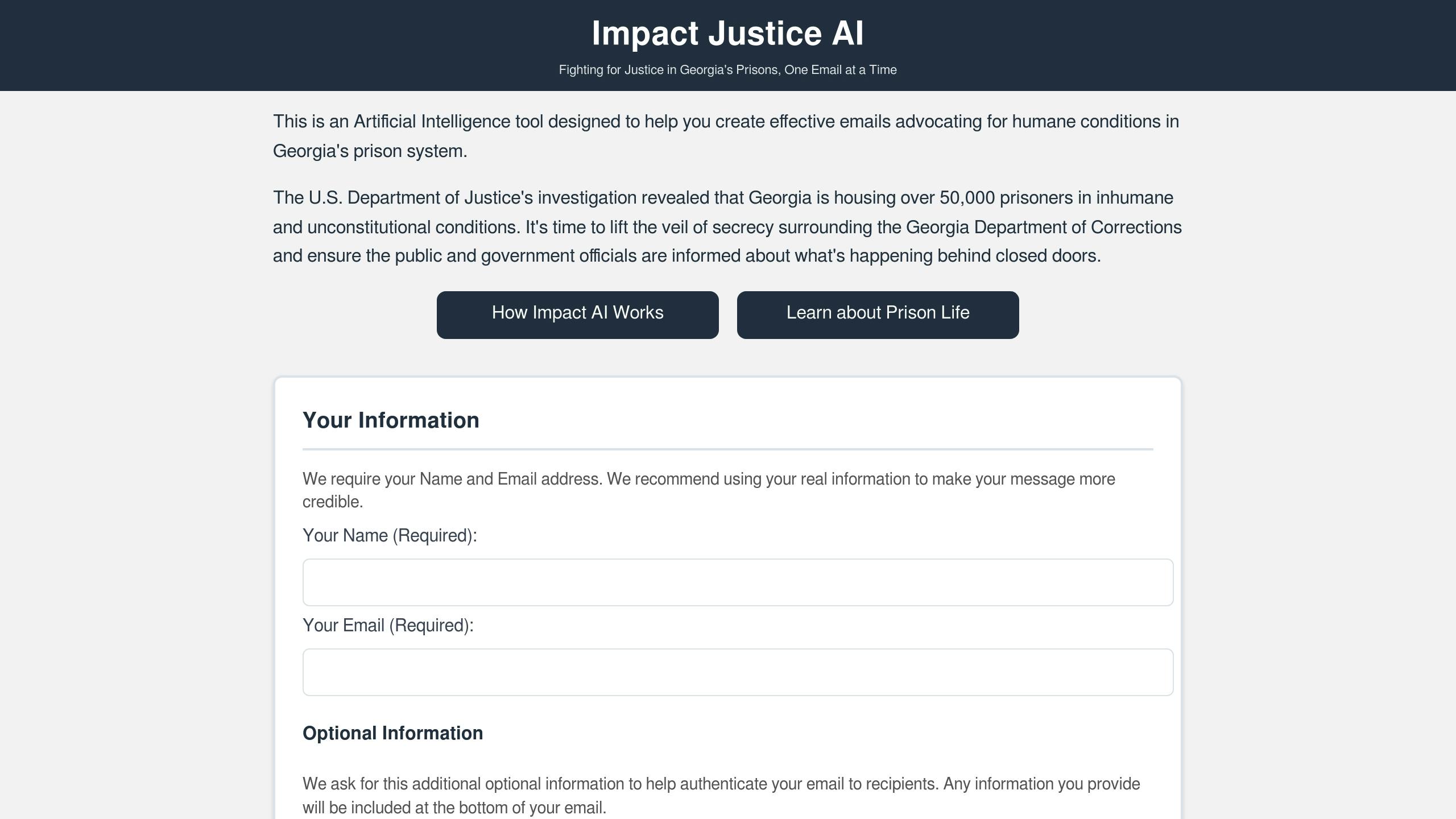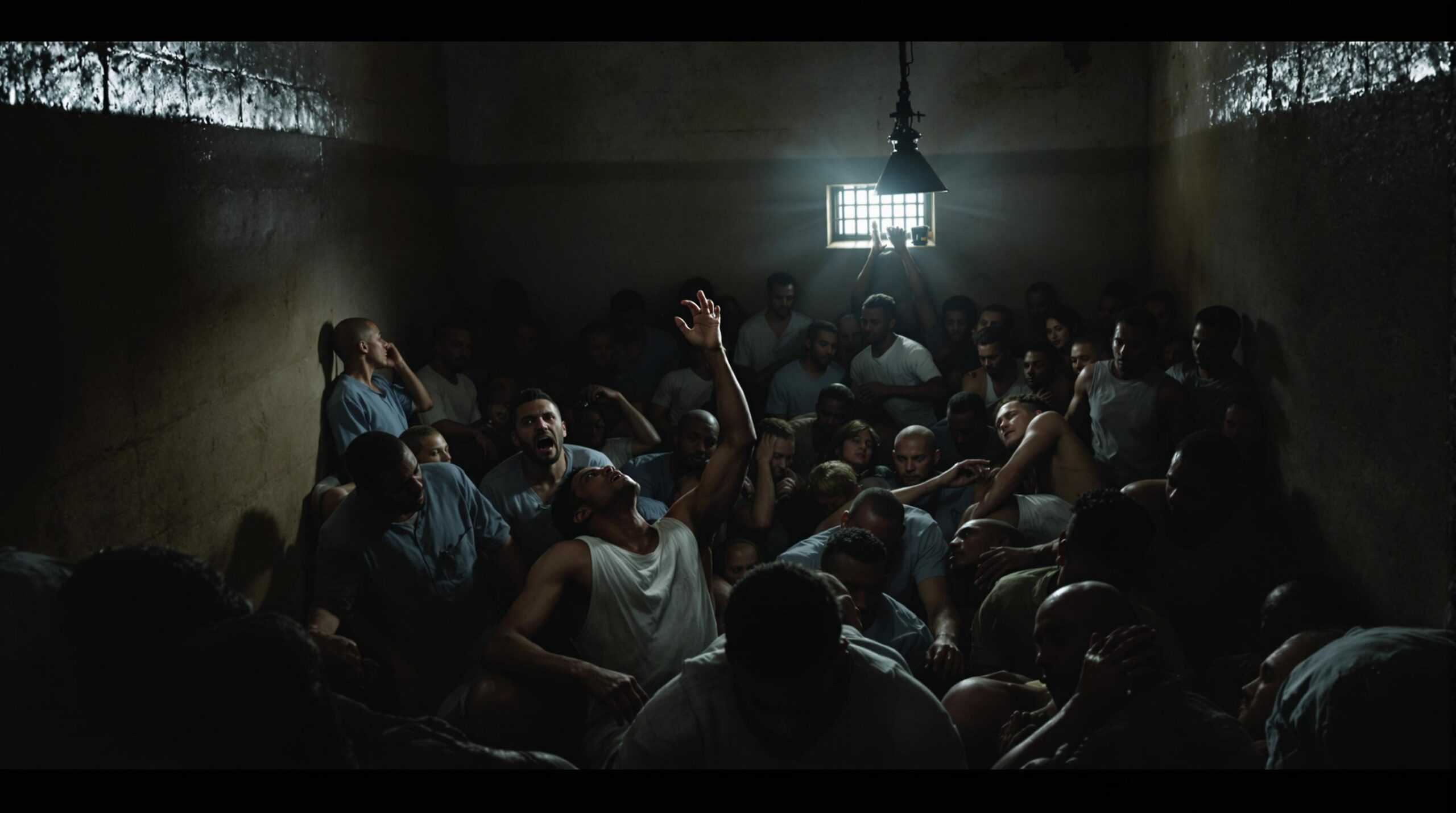Georgia’s prisons are in crisis. Overcrowding has reached 240% capacity, with 49,000 inmates crammed into facilities designed for far fewer. This problem stems from harsh sentencing laws, a failing probation system, and outdated infrastructure. Here’s what you need to know:
- Harsh Sentencing Laws: Mandatory minimums and “two-strike” policies drive up prison numbers, with 12% of inmates serving life sentences for non-violent offenses.
- Probation Failures: Georgia leads the U.S. in probation rates. Technical violations (like missed payments) account for 23% of prison admissions, costing taxpayers $125 million annually.
- Aging Prisons: 70% of facilities date back to the 1970s, with overcrowded cells, failing plumbing, and limited medical care.
The impact is severe:
- Violence has risen 22% since 2019.
- Mental health crises have doubled, and chronic illness care delays affect 40% of inmates.
- African Americans are disproportionately affected, making up 63% of the prison population.
Solutions like sentencing reform, updated facilities, and rehabilitation programs are underway, but systemic change is urgently needed to break the cycle of overcrowding and inequality.
Related video from YouTube
Main Causes of Georgia Prison Overcrowding
The overcrowding crisis in Georgia’s prisons, highlighted by Fulton County Jail‘s recent plea, is the result of three long-standing issues that have worsened over decades.
Strict Sentencing Laws
Georgia’s “tough-on-crime” policies, especially from the 1990s, continue to push prison numbers higher. The 1994 “Two Strikes” law requires life sentences for a second violent felony conviction [11]. For drug offenses, mandatory minimums range from 5 to 25 years without parole, leading to a 63% increase in average drug sentence lengths since 2000 [11].
In cases involving three-strikes laws, sentences are often tripled compared to those without such enhancements [11]. Shockingly, 5,400 inmates – 12% of Georgia’s prison population – are serving life sentences for third non-violent felonies [11][6].
“Judges are essentially handcuffed by sentencing floors that prevent case-by-case adjustments”, according to a 2022 Sentencing Project analysis [11].
While these sentencing laws are filling prisons, Georgia’s probation system is making the problem worse.
Failed Probation and Parole Systems
Georgia has the highest probation rate in the U.S., with 1 in 17 adults under supervision and roughly 420,000 people on probation or parole as of 2024 [6][8]. This system creates a revolving door between probation and prison. Technical violations – like missing a payment or appointment – account for 23% of annual prison admissions [8][6].
- 82% of parole returns are due to technical violations, not new crimes
- Only 18% of returns involve new criminal charges
- These revocations cost taxpayers $125 million each year in incarceration expenses [8][6]
Private probation companies handle 60% of cases, often using fee structures that increase the likelihood of violations [6].
Adding to these systemic failures, Georgia’s outdated prison facilities are simply not equipped to handle the growing population.
Old and Limited Facilities
About 70% of Georgia’s prisons were built in the 1970s and use outdated radial designs originally intended for single-cell occupancy [1][10]. These facilities, now averaging 47 years old, operate at 112% capacity, and only 15% of cells are single-occupancy [1][9][10].
- Maintenance issues have reduced available beds by 15% [1]
- 32 prisons face daily closures due to plumbing failures and leaks [1][9]
Beyond overcrowding, these facilities lack modern security. Only 8 prisons are equipped with full-body scanners [1]. This gap has fueled a $12 million annual contraband trade, mainly in cell phones, and contributed to a 27% rise in gang-related assaults since 2020 [1][11].
Impact on People and Prison Operations
Health Problems and Risks
The failures of the prison system directly affect the well-being of those incarcerated. Overcrowding worsens the management of chronic illnesses, with 40% of inmates experiencing care delays [1][10]. Mental health issues are also on the rise, with a 30% increase in depressive symptoms linked to the stress and lack of privacy in overcrowded spaces [12]. These conditions make it harder to achieve rehabilitation goals and leave inmates in a constant state of physical and emotional strain [3].
Rising Prison Violence
When prisons exceed capacity, violence becomes a major concern. Facilities operating at more than 120% capacity report 58% more violent incidents, and assaults have climbed 22% since 2019 as some prisons reach 140% occupancy [1][11]. The increase in violence can be attributed to several factors:
- Limited access to basic resources like showers and phones
- Tensions and disputes, particularly among gangs, in confined spaces [1]
- Chronic understaffing, with vacancy rates as high as 49.3% [3]
Racial and Social Inequities
Overcrowding in prisons highlights and deepens existing social inequalities. African Americans make up 63% of the prison population, despite being only 32% of the general population [6][5]. They also face 25% higher probation revocation rates, which contribute to the overcrowding crisis [6].
The effects extend far beyond prison walls. Released inmates from overcrowded facilities are:
- 35% more likely to reoffend, perpetuating the cycle of overcrowding [4][6]
- More likely to suffer from chronic illnesses and untreated mental health issues, leading to 50% higher rates of long-term health problems and fewer job opportunities [6][12]
These challenges disproportionately impact minority communities, creating a cycle of disadvantage that is hard to break.
sbb-itb-25113a2
Current Steps to Reduce Overcrowding
New Laws and Policies
Senate Bills 174 (2017) and 105 (2021) require early probation termination after three years of compliance. These laws are applied retroactively, aiming to ease the strain on the system [8].
Prison Building and Updates
Georgia is addressing overcrowding not just through policy but also by investing in new facilities. A $437 million prison in Washington County, set to open in 2026, is designed to replace outdated multi-bed cells with single-bed units. The goal is to reduce inmate conflicts, but critics argue this approach sidesteps deeper issues like sentencing laws. Researchers from Georgetown Law warn that building new prisons could reinforce overincarceration rather than solve it [1][4][7].
This concern is especially relevant given that Georgia’s prison population grew by 4.4% between 2022 and 2023 [7]. While aging facilities from the 1970s need replacement, critics believe focusing on infrastructure alone won’t address the root causes of overcrowding.
Alternative Programs
Georgia is also experimenting with programs aimed at reducing incarceration rates:
- Specialized courts for cases involving drugs, DUIs, or mental health issues, offering rehabilitation instead of jail time [8].
- Residential substance abuse treatment programs, though private probation fees can make participation difficult for some, according to Reform Georgia [6].
- Faster court processing, which has already reduced Fulton County’s jail population by 1,000 since 2023 [9].
These efforts could help address disparities, as African Americans face a 25% higher rate of probation revocation. However, political trends under Governor Brian Kemp suggest a possible return to stricter crime policies [7], which might limit the impact of these alternatives.
Steps Needed for Long-term Change
Better Sentencing Rules
Structural changes to sentencing rules could have a lasting effect beyond the current policies. Here are a few key strategies:
- Prioritizing probation for nonviolent offenses, which has already led to a 12-18% drop in incarceration rates in other states [8].
- Limiting probation terms to two years for nonviolent offenses, significantly shorter than the current average of 6.3 years [6].
- Automatic sentence reviews after three years for nonviolent offenders who demonstrate good behavior [8].
These steps would build on existing reforms from SB105. However, progress faces challenges, including judicial resistance (72% of judges oppose these guidelines) and lobbying efforts by private probation firms, which have spent $2.1 million to maintain the status quo [6].
More Support After Release
The Georgia Prisoner Reentry Initiative has demonstrated measurable success in helping formerly incarcerated individuals reintegrate into society:
| Program Component | Success Rate | Comparison |
|---|---|---|
| Employment Retention (1 year) | 63% | 41% state average [8] |
| Housing Assistance (6-month) | 33% reduction in recidivism | Standard parole baseline [8] |
| Vocational Training | 54% employment rate | 27% baseline [8] |
To sustain these outcomes, reliable funding is essential. Expanding the state’s Justice Reinvestment model could help. Between 2012-2015, this model saved $264 million [6]. These savings could be directed toward essential services like:
- Substance abuse treatment programs covered by Medicaid
- Transportation vouchers to help with job access
- Childcare subsidies for working parents
- Employer partnerships incentivized through tax benefits
Impact Justice AI: Digital Prison Reform Tools

Technology is playing a growing role in driving reform. Tools like Impact Justice AI enable greater public engagement by amplifying advocacy efforts. For example, this AI-driven platform boosts legislator contacts by 450%, using Department of Justice data to send personalized messages [3].
“Cross-referencing user input with real-time legislative tracking data, emphasizing bills addressing specific overcrowding factors like House Bill 177 (2025) proposing mandatory sentence reviews after 5 years” [1]
This tool turns rising violence statistics – such as the 27% increase in gang assaults since 2020 – into actionable advocacy. It’s particularly important in Georgia, where only 34% of residents are aware that their state leads the nation in probation rates [8]. By addressing public misconceptions, these data-driven solutions can create momentum for meaningful change.
Conclusion: Next Steps for Reform
Georgia’s prison overcrowding crisis, driven by harsh sentencing laws and probation system failures, demands immediate and long-term solutions. Addressing these issues requires a mix of quick actions and structural changes. The focus should be on reforming sentencing practices, upgrading prison facilities, and investing in programs that support rehabilitation.
To tackle these challenges effectively, here’s what needs attention:
- Reevaluating sentencing laws: Removing rigid sentencing minimums and expanding programs based on proven rehabilitation methods.
- Upgrading prison infrastructure: Shifting to single-cell layouts in facilities, which has been shown to lower disease transmission rates by 40% [10].
- Boosting rehabilitation efforts: Increasing access to cognitive behavioral therapy programs, which have reduced re-arrest rates by 22% [2].
Public involvement plays a critical role in pushing for these changes. Tools like Impact Justice AI allow individuals to highlight poor prison conditions and showcase successful reform examples, amplifying grassroots advocacy efforts.
Georgia’s distinction as having the highest probation population in the U.S. [6] underscores the urgency for transformation. By implementing targeted reforms and maintaining public pressure, the state has the opportunity to reshape its correctional system into one that emphasizes rehabilitation over mere confinement, offering better outcomes for individuals and communities alike.
FAQs
Are Georgia prisons overcrowded?
Yes, Georgia’s prisons are operating at 140% of their intended capacity [10], placing the state fifth in the nation with 47,000 inmates [7]. This overcrowding issue is largely driven by factors like harsh sentencing laws and high probation failure rates. Unfortunately, recent legislative changes could make the problem even worse.
Here are some key stats that highlight the issue:
- Facilities report 73% more violent incidents at current occupancy levels [10].
- Overcrowding has doubled the rate of mental health crises among inmates [12].
While reform efforts have been made, three recent policy changes pose serious challenges: the expansion of RICO-covered crimes (2023), new cash bail requirements for 30 additional offenses (2024), and a return to tough-on-crime policies. These shifts could undo progress made through sentencing reforms and digital advocacy tools, such as Impact Justice AI, emphasizing the need for continued public pressure and action.
